Motorola shoots new models like a rifle. Moto G9 Power, Moto G9 Plus, Moto G 5G – these are just a few devices that have hit our market in recent months. There is nothing strange in it, the brand, just like other companies, probably wants to take the opportunity and quickly fill the gap that arose after Huawei. It turned out that smartphones without services Google are no longer so attractive to customers and the Chinese record spectacular drops in sales.
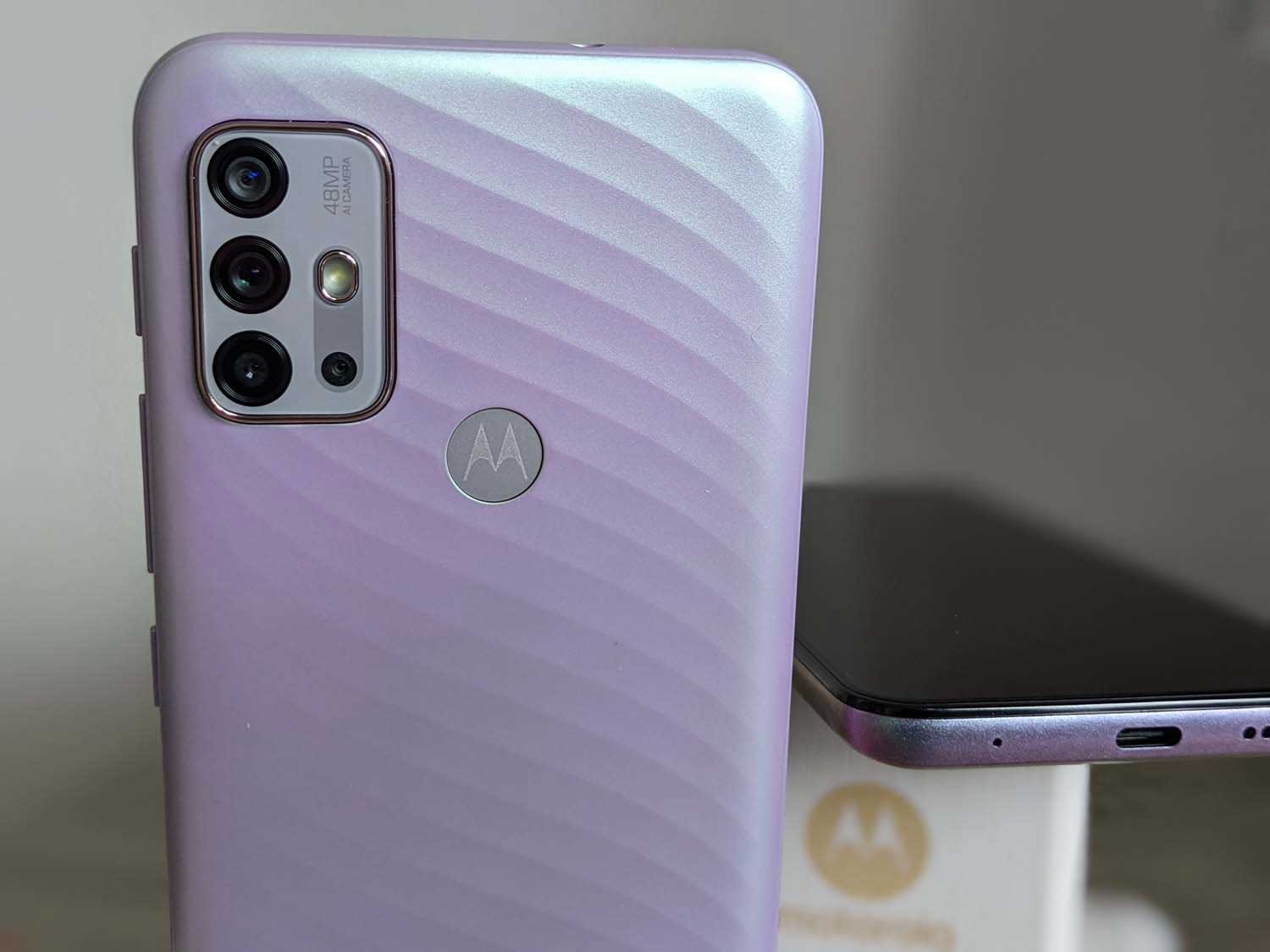
Motorola he feels best at the border between the middle and budget classes and these two models are now on sale. G10 and G30 divides the difference of PLN 200 – for G10 you have to pay PLN 699, G30 is an expense of PLN 899. At first glance, the phones are very similar, their screens are identical in size and resolution, but the processors and the set of cameras are different. So let’s see who both models are aimed at and who should be interested in them.

Design
The dimensions of both devices are almost identical. In G10 it is 165.22 x 75.73 x 9.19 mm, in G30 it is 165.22 x 75.73 x 9.14 mm. The difference is in the finish of the plastic patties, which are more expensive G30 they are nicely matted and change color depending on the angle at which the light falls on them. In cheaper G10 apart from matting, they have an interesting wave-shaped texture. Virtually none of the phones collect fingerprints. In both boxes you will also find a silicone, transparent case.
The layout of buttons and inputs is the same – USB-C at the bottom and a single speaker, which sounds almost identical in both cases – loud and clear. On the right side, in sequence, there are – a rough power button, volume control and assistant Google. On the upper edge there is a mini-jack for headphones and on the left side there is a sealed tray for two SIM cards, one of which can be replaced with a memory card.
On the back we have an identical-looking, rectangular island with camera eyelets and a LED flash, and a fingerprint reader with the Motorola logo. It works the same in both models – flawlessly but at an average pace. Both phones can also be face unlocked.
Trademarks in G30 placed at the bottom of the back, and in G10 on the lower edge. The weight is identical at 200 g, both of them meet the IP 52 standard.
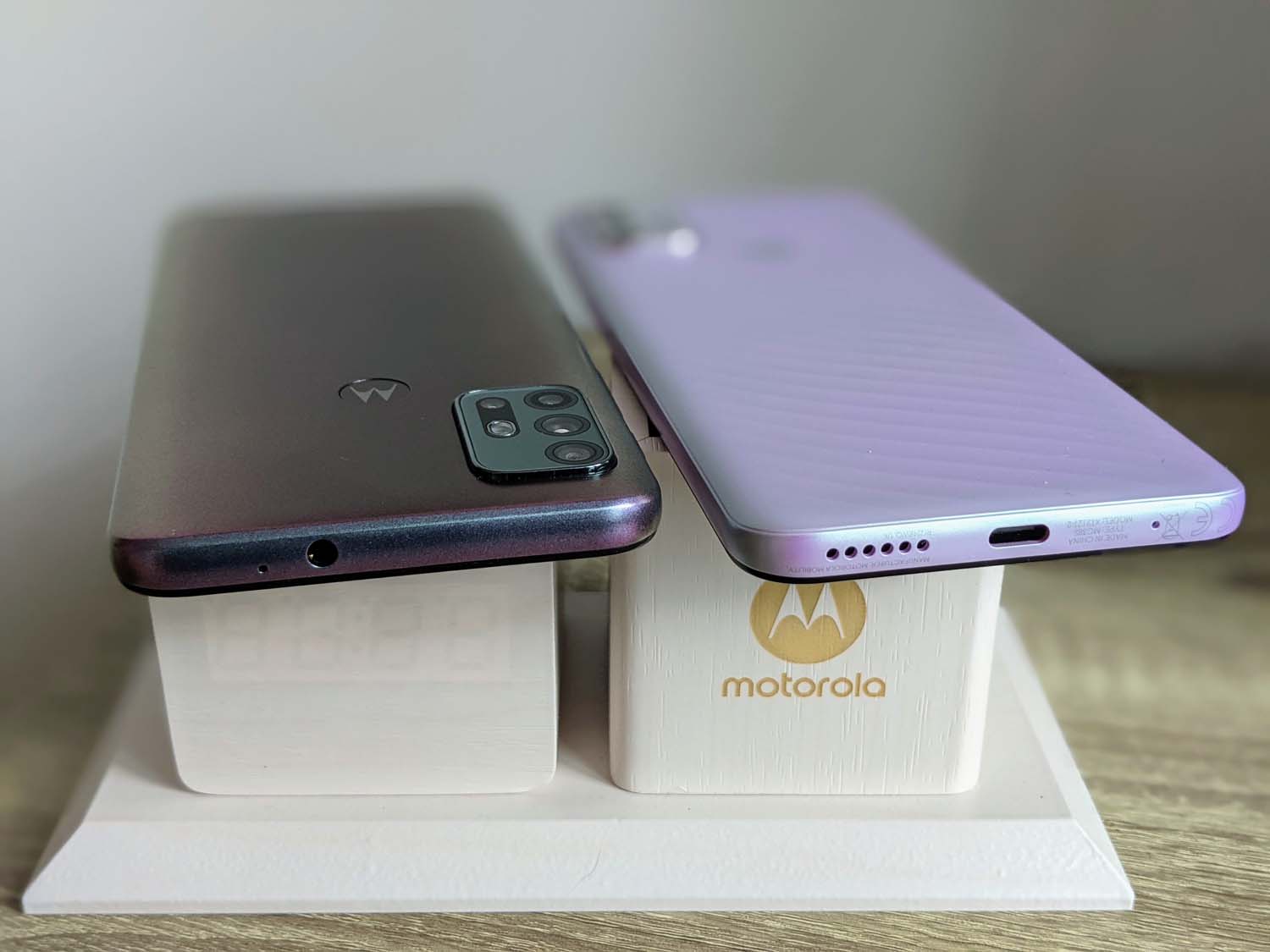
The display
In smartphones we have the same unit – it is an IPS TFT panel with a diagonal of 6.5 inches and HD + resolution 720 x 1600 pixels, 270 ppi. The difference is in refreshing the screen – in the more expensive model it can be up to 90 Hz. In the cheaper one we have the standard 60 Hz. This, of course, translates into the using experience that in G30 are better – all animations are smoother and more pleasing to the eye, cropping and framing are practically non-existent, while in G10 they are visible.
It does not change the fact that the quality of both screens is average, the viewing angles are so-so, and outside on a sunny day we will have to look for a shade.
In the settings, we can choose colors (natural, enhanced, saturated), a dark theme or night lighting. We do not have a notification diode or AoD, but when a notification comes, the appropriate icon is displayed on the dimmed screen for a moment and we can directly go to it from this level.
Specification / Operating System
Let’s start with the more expensive one Moto G30. The smartphone uses a Qualcomm processor – Snapdragon 662 (4×2.0 GHz Kryo 260 Gold; 4×1.8 GHz Kryo 260 Silver) with an Adreno 610 GPU. For this we have 4 GB of RAM and 128 GB of built-in memory. In AnTuTu Benchmark, the phone scored 180,974 points. It works perfectly on a daily basis – it works quickly and smoothly (thanks to 90 Hz and low screen resolution which does not burden the processor). He has no problems loading the application, he keeps tabs in his memory for a long time, he can easily cope with games (tested on PUBG).
In cheaper Moto G10 we can find a budget Snapdragon 460 (4×1.8 GHz Kryo 240; 4×1.6 GHz Kryo 240) with Adreno 610 graphics. We have 4 GB of RAM and 64 GB of built-in memory. In AnTuTu Benchmark, the phone scored 144,035 points. The difference in daily operation is of course, the pages load a bit slower and the operation seems less smooth (which is also probably due to the 60 Hz screen refresh). But I can’t write the phone to be sluggish and to work badly.
Both devices can navigate similarly: they catch the signal quickly and maintain the connection stably, so I had no problem with them. There is NFC in both, which is commendable, especially in the cheaper model, so we will pay with them contactlessly. The quality of calls is at a good level. The music on the headphones is very nice, we have a built-in equalizer in which we can adjust the sound.
The connectivity package for both devices is identical and includes: LTE, dual band WiFi, Bluetooth 5.0, NFC. Location is realized using: GPS, A-GPS, GLONASS, Beidou, Galileo. The sensor kit includes: accelerometer, proximity, lights, gyroscope, gravity, fingerprint reader.
The system is Android 11, enriched with traditional Motorola add-ons grouped in the Moto application. It includes, among others gestures, such as shaking the phone to turn the flashlight on and off, the game zone, and the ability to choose wallpapers and the appearance of icons. Separately, we have nice interactive wallpapers to download. There is also an FM radio in both devices.
photos & Camera
Camera set in Moto G30 includes:
- main lens 64 MP, f / 1.7, 1 / 1.97 “, 0.7 µm, PDAF;
- wide angle 8 MP, f / 2.2, 118˚, 1 / 4.0 “, 1.12μm,
- 2 MP macro, f / 2.4,
- depth sensor 2 MP, f / 2.4,
- selfie lens 13 MP, f / 2.2, 1.12μm.
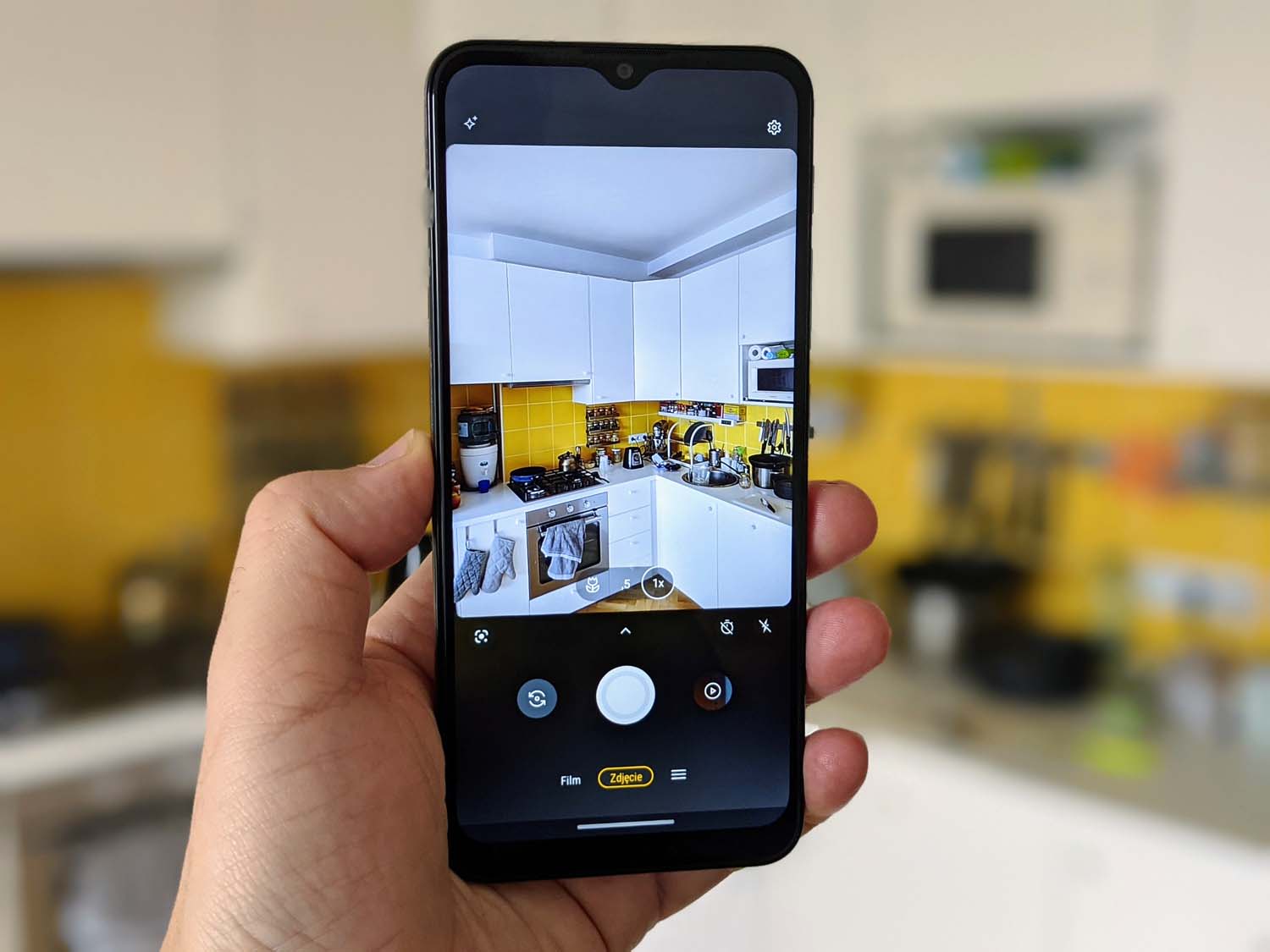
IN Moto G10 we have:
- main lens 48 MP, f / 1.7, 1 / 2.0 “, 0.8μm, PDAF,
- wide angle 8 MP, f / 2.2, 118˚, 1 / 4.0 “, 1.12μm,
- 2 MP macro, f / 2.4,
- depth sensor 2 MP, f / 2.4,
- selfie lens 8 MP, f / 2.2, 1 / 4.0 “, 1.12 µm.
Motorola some time ago it improved the appearance of the camera app. Now all functions are available from the bottom bar, not the top bar, which is much more convenient because you can do it with your thumb and you don’t have to help yourself with the other hand. The only difference between the models is the ability to take a photo at a maximum resolution of 64MP in G30, in G10 there is no 48MP photo option. Everything else is identical, with spot color, professional mode (with histogram), panorama, group selfie, night photo, or portrait mode.
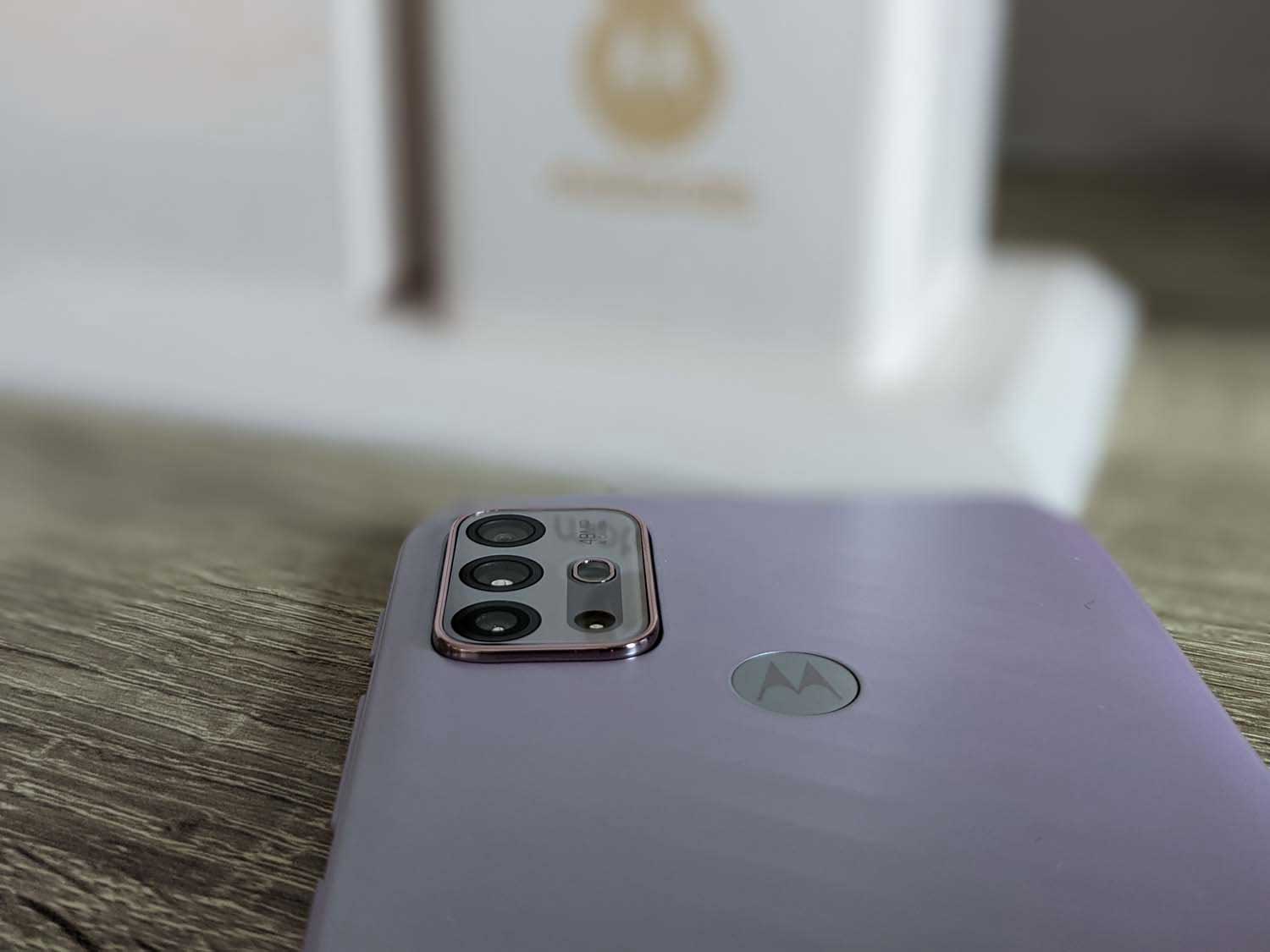
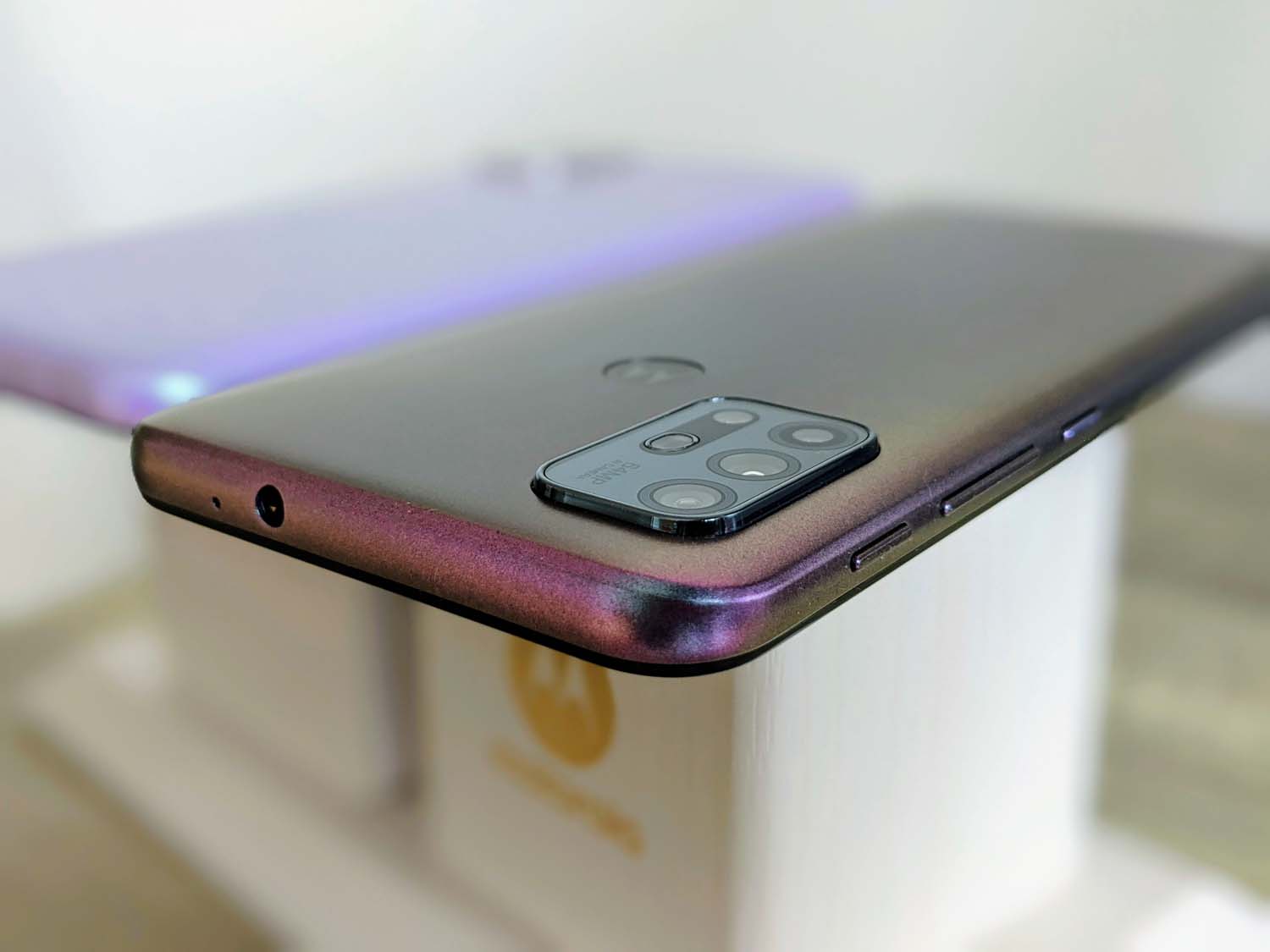
On a nice day, the quality of photos from both smartphones is similar and they are pleasing to the eye. Advantage of more expensive G30 it results mainly from the higher resolution of the matrix and thus the recording of more details. The colors are also slightly more saturated, but the tonal range is similar. G30 copes better in contrasting situations, with transitions from shadow to light. The maximum digital zoom is 8x and here you can also see the advantage G30 and her 64 MP. The wide angle is identical, with noticeably less detail at the edges of the frames compared to the main matrix. The night mode is good, brightening the photos nicely and sharpening the light sources, and the portrait mode with a nice-looking blur and background cut-off for this class of smartphones. In the selfie, thanks to the higher resolution, it wins G30. The macro photos from the 2 MP webcam are of rather poor quality.
We will record videos in FHD resolution at 30 and 60 FPS, digital stabilization works at 30 FPS and works quite well. It is similar with the collected sound.
Sample pictures Moto G10:
Sample pictures Moto G30:
Battery
The cells in both devices are identical and have 5000 mAh each. With 60Hz screen refresh on in G30 The results obtained on a single charge will also be almost identical, with a duration of 2 to 3 days. In my case, it consisted of a fairly large number of connections, a daily walk of over an hour with the application turned on and an hour and a half film session in the evening. We cannot charge the phones inductively. G30 has a more powerful 20W charger, w G10 it is 10W and charging takes about 1.5 and 2 hours, respectively.
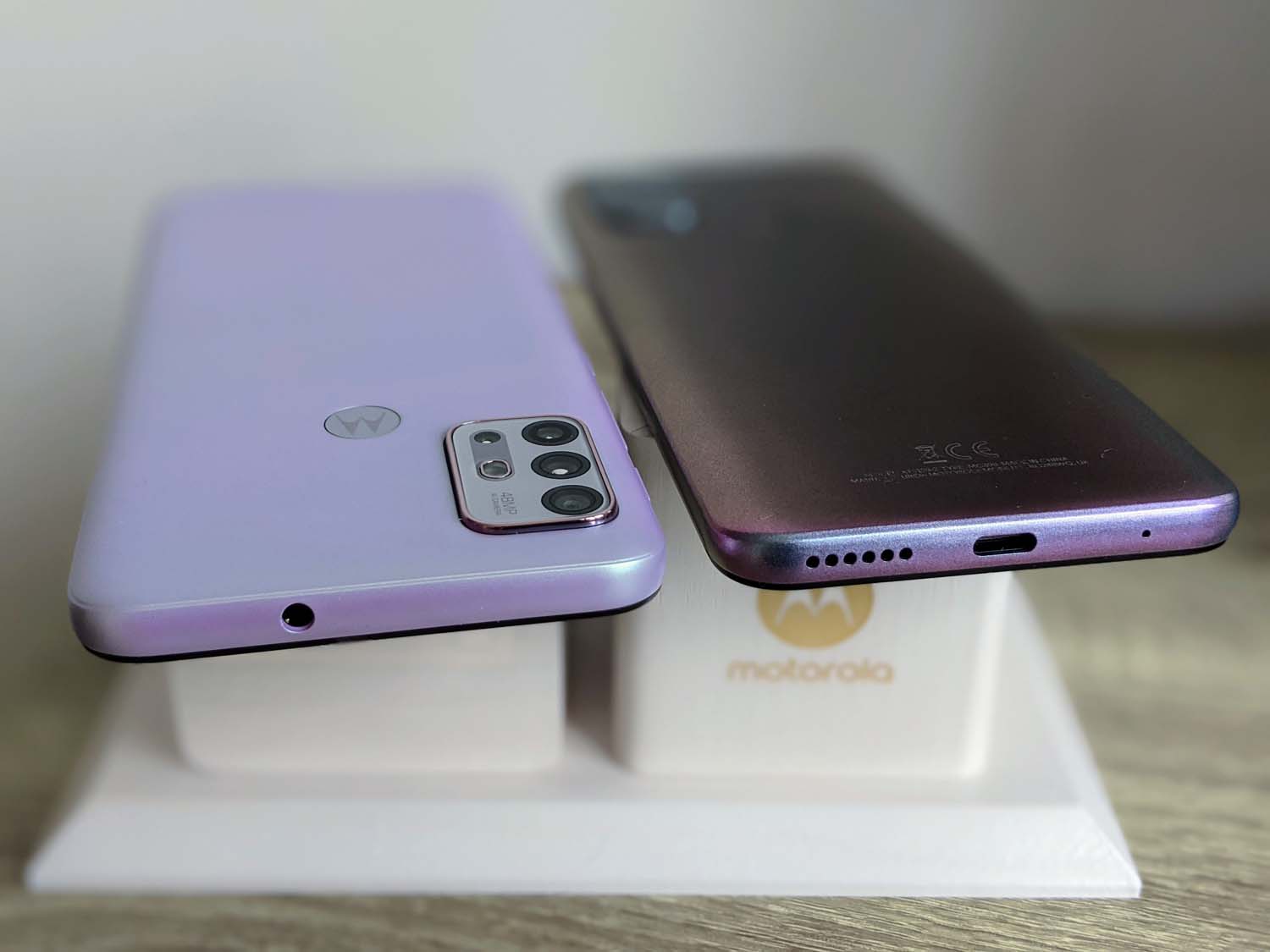
Conclusion Moto G10 & Moto G30
The difference of little price G30 and Moto G10 perfectly reflects the difference in quality. Who wants a bit better, smoother operation and better photos has to pay a bit more. However, both phones are generally very similar. Before testing, while studying the specifications, I thought there would be a clear performance advantage G30 due to the processor. However, probably all of the excess power goes to 90Hz refresh, and both devices work very similarly.
On the side of their advantages, apart from good performance, the quality of photos, sound on the headphones, very long working time on a single charge and a set of NFC modules at the forefront should also be noted. Only an average quality screen works to their disadvantage. At this price, you can easily find smartphones with displays with FHD resolution, and even AMOLED. They will also not be a good proposition for people who are looking for smaller devices.
Who is it for Moto G10 and Moto G30:
- People who like pure Android
- Looking for good quality photos at a low budget
- Those who appreciate smooth and trouble-free operation
- People who like big smartphones
- People who require a long battery life
- People looking for a device with good sound on their headphones
For whom it is not Moto G10 and Moto G30:
- People who require a better quality screen
- Those who like small smartphones
The main advantages and disadvantages
Advantages Moto G30:
- Capacious battery and long operating time on a single charge
- A well-functioning fingerprint reader
- Smooth operation
- 90 Hz screen refresh
- A separate Google assistant button
- Mini-jack input for headphones
- Good photo quality
- Silicone case and charger in the box
Disadvantages Moto G30:
- Average quality HD screen
- Large dimensions will not suit everyone
Advantages Moto G10:
- Capacious battery and long operating time on a single charge
- A well-functioning fingerprint reader
- Good working comfort
- A separate Google assistant button
- Mini-jack input for headphones
- Nice quality of photos
- Silicone case and charger in the box
Disadvantages Moto G30:
- Average quality HD screen
- Large dimensions will not suit everyone















Add Comment